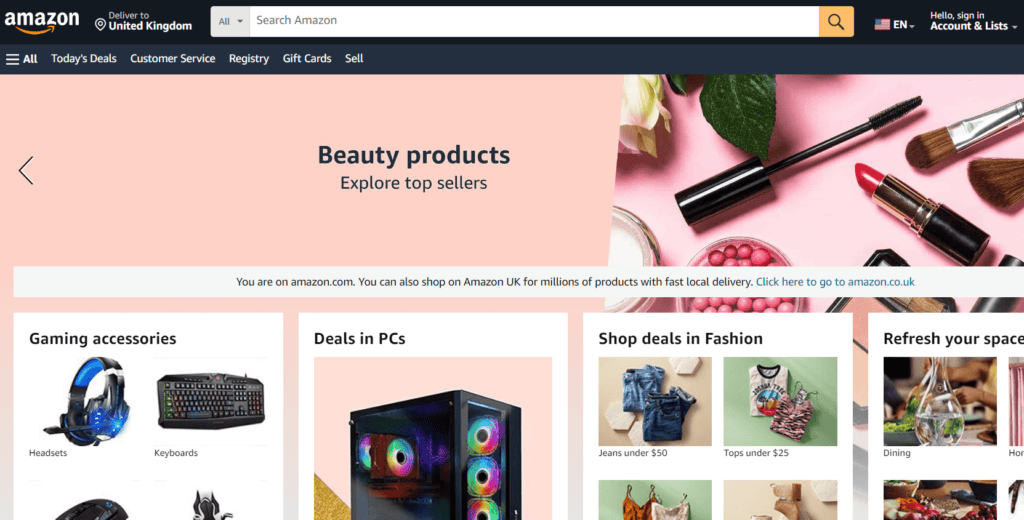Outline:
Did you know that by 2027, nearly 62% of all eCommerce sales are expected to be made via mobile? With the digital marketplace rapidly evolving, staying ahead in mobile eCommerce conversion rate isn’t just an option—it’s essential. With consumers glued to their phones and tablets, the convenience of shopping anytime, anywhere—on the go or from the comfort of their couch—is fueling the continued surge of mobile commerce sales.
In 2024, the stakes are higher than ever. Recent studies indicate that mobile commerce, or m-commerce, will not only dominate online shopping but will also decisively influence overall retail strategies. Failing to adapt to the mobile-first landscape leaves commerce businesses vulnerable in a market increasingly dominated by mobile shopping.
Ester equips you with the knowledge and tools to succeed. Our actionable insights and strategies will help you maximize mobile sales with proven tactics.
Current Trends in Mobile Ecommerce and Their Impact on Conversion Rates
Let’s shift our focus from the surge in mobile commerce to the trends fueling this growth. In 2024, cutting-edge advancements are not just influencing consumer behavior, but also redefining the very definition of successful mobile commerce. So, what are they?
Consumer Shift to Mobile-First Purchasing
The convenience of mobile devices continues to propel consumer preferences towards shopping on-the-go. Today, users prefer using mobile devices for shopping due to the ability to shop anytime and anywhere. This trend is a clear call to action for businesses to prioritize mobile-friendly designs and functionalities that cater to the on-the-move consumer.
Advancements in Technology Enhancing User Experience
Technologies such as Augmented Reality and Artificial Intelligence are revolutionizing the shopping experience. For instance, AR allows customers to visualize products in their own space before buying, significantly enhancing user engagement and reducing hesitation in purchase decisions. AI, on the other hand, powers personalized shopping experiences, recommending products based on user behavior and preferences, which has shown to increase mobile eCommerce conversion rates by up to 30%.
Benchmarks for mobile eCommerce conversion rate can vary depending on the industry. Here’s a breakdown of some factors that influence these rates:
- Product complexity: Simpler products with lower price points tend to improve ecommerce conversion rate on mobile. People are more comfortable buying everyday items or clothes on their phones than high-consideration purchases like cars or furniture.
- Target audience: Industries that cater to younger demographics tend to see better mobile eCommerce conversion rate. Younger generations are more comfortable shopping on their phones.
- Urgency of need: If someone needs something urgently, they’re more likely to complete a purchase on their phone. Businesses that sell groceries or medicine might see higher mobile eCommerce conversion rate than those selling non-essential products.
As mobile commerce grows, the strategies to capture and convert users must also evolve. Understanding these trends sets the foundation for addressing the challenges that may hinder mobile eCommerce conversion rate, which we’ll discuss next.
Key Challenges in Mobile Ecommerce Conversion Rate
Navigating the world of mobile eCommerce can sometimes feel like steering through a stormy sea—thrilling yet fraught with challenges. Let’s explore the common hurdles that might be slowing down your mobile eCommerce conversion rate and discuss practical, real-world insights into how these can be overcome.
User Experience Nightmares
Imagine you’re shopping on your phone, and every page takes ages to load, or worse, the checkout button just won’t respond. Frustrating, right? This is exactly what drives half of users to abandon mobile sites that take over three seconds to load.
But it’s not just about speed. Mobile shopping is often plagued by confusing layouts and cluttered designs. For instance, Baymard Institute found that streamlining form fields can improve ecommerce conversion rate on mobile by up to 30%. This is a call to action: optimize those buttons, simplify those forms, and make mobile shopping a breeze.
The Need for Speed
Speed does more than keep users happy—it literally pays. Akamai’s research points out a startling figure: a 100-millisecond delay in load time can dip conversion rates by 7%. Why so dramatic? Because mobile users are often on the go, relying on quick interactions. Online retailer Zalando revved up their mobile pages to load in under 0.8 seconds, 12% improve ecommerce conversion rate on mobile. If that’s not a wake-up call to prioritize page speed, what is?
Building Trust in the Tiny Details
Security isn’t just a feature; it’s a fundamental necessity. A significant amount of mobile shoppers hesitate to make purchases due to security fears. Trust is paramount in converting a visitor to a customer. It’s not just about having security measures in place but also about making them visible and understood.
For example, displaying security badges prominently or using recognizable payment gateways can reassure customers that their transactions are safe, potentially boosting your mobile eCommerce conversion rates.
Each of these challenges, while daunting, offers a unique opportunity to refine and perfect your mobile eCommerce strategy. By addressing these issues directly and with a clear focus on the user’s experience, businesses can not only enhance their site’s functionality but also build a loyal customer base driven by trust and satisfaction.
How to Increase Mobile Conversion Rate
Unlocking the full potential of your mobile eCommerce site involves a blend of technology, psychology, and good old-fashioned customer service. Here’s how to increase mobile conversion rate and turn those mobile browsing sessions into confirmed purchases with strategic improvements:
01 Optimize for Speed
- Quick Wins for Quick Loads: Every second counts in mobile commerce. Compress images, leverage browser caching, and minimize JavaScript to shave precious milliseconds off your load time. Major retailer Walmart found that for every 1-second improvement in page load time, conversions increased by 2%. It’s clear: speed sells.
- Adopt AMP: Implementing Google’s Accelerated Mobile Pages can dramatically increase the speed of your mobile pages, providing an almost instantaneous loading experience for users.
- Leverage Caching: Store frequently accessed data locally on user devices for quicker retrieval.
02 Streamline Navigation and User Interface
- Simplify to Amplify: Rethink your mobile site’s navigation by reducing the number of steps to purchase. A minimalistic approach can reduce user frustration and guide them smoothly towards making a purchase. Consider how Amazon uses its ‘1-Click’ ordering system to make purchasing as frictionless as possible.
- Intuitive Search: Optimize your search function to be typo-tolerant and offer auto-complete suggestions.
- Product Discovery Made Easy: Showcase high-performing products and personalized recommendations on your homepage.
- Responsive Design: Ensure that your mobile site is responsive across all devices and screen sizes. This adaptability of responsive website design services enhances user experience by providing a consistent look and feel regardless of the device used.
Focus on Thumb-Friendly Interactions: Design buttons and forms with ample spacing to avoid accidental mis-taps.
03 Enhance Mobile Checkout Process
- Minimal Form Fields: Only ask for essential information during checkout.
- Auto-fill Support: Integrate auto-fill functionality to minimize form-filling frustration.
- Multiple Payment Options: Cater to diverse preferences by offering a variety of secure payment methods, including digital wallets.
- Clear Order Progress: Implement a progress bar or visual cues to keep users informed during checkout.
- Transparent Pricing and Shipping Info: Be upfront about all costs from the beginning of the checkout process to avoid last-minute surprises that could deter customers.
- One-Tap Checkout: Minimize the steps needed to complete a purchase. Tools like Apple Pay and Google Pay can streamline the process, making transactions faster and more secure.
04 Utilize High-Quality Visuals
Use high-resolution images and videos to capture user interest. Visuals are key on mobile, where screen real estate is limited. Showcasing products through multiple angles and video demonstrations can help simulate a tactile shopping experience.
- Concise Yet Compelling Descriptions: Highlight key features and benefits in clear, scannable language.
- Customer Reviews and Social Proof: Integrate customer reviews directly on product pages. Positive feedback from other buyers can significantly influence decision-making.
05 Personalize the Shopping Experience
- Leverage AI for Custom Recommendations: Use AI to analyze shopping behaviors and preferences to offer personalized product recommendations. This not only makes the shopping experience more relevant but also encourages additional purchases.
- Segmentation: Tailor promotions and content to different user groups based on their browsing and purchase history, location, and demographics.
06 Build Trust with Robust Security Measures
- Highlight Security Features: Make sure your security badges are visible and up-to-date. Offer multiple, well-known payment options to instill confidence in transaction security.
- Clear Return and Refund Policy: Make your return and refund policy easily accessible and easy to understand.
- Secure Payment Gateway: Display trust badges and ensure your payment gateway is secure and reputable.
- Customer Support Options: Offer multiple channels for customer support, including live chat or a dedicated phone line.
07 Optimize Product Descriptions and SEO
- Mobile SEO Practices: Mobile users tend to search differently compared to desktop users, often using shorter phrases or voice search. To capture this audience, ensure your product descriptions are concise and to the point, incorporating keywords that are likely to be used in mobile searches. Also, make sure your meta descriptions are compelling and informative, as mobile screens offer limited space to capture user interest.
- Structured Data: Implementing structured data (also known as schema markup) can significantly enhance your product listings in search results. This form of data tells search engines more about the content of your page, allowing them to display rich snippets like price, availability, and ratings directly in search results.
08 Leverage the Power of Mobile Marketing
Re-engage your mobile audience and drive conversions through targeted marketing strategies.
- SMS Marketing: Utilize SMS marketing for exclusive offers, order updates, and shipping notifications (with user consent, of course).
- Mobile App Integration: Consider developing a dedicated mobile app for a more personalized and convenient shopping experience.
09 Engage with Push Notifications
Push notifications can be a powerful tool to drive engagement and conversions, especially if they are timely and relevant to the user. For instance, notifying a user about a flash sale or a discount on an item they viewed can prompt immediate action.
Personalization is key here; use user data such as past purchases, viewed products, and search history to tailor your messages. Ensure that notifications are sent at optimal times based on user behavior patterns to maximize impact.
10 Collect and Analyze User Feedback
- Continuous Improvement: Direct feedback from users is invaluable for optimizing the mobile shopping experience. Implement feedback tools like in-app surveys or feedback forms that are easy to access and use. Ask specific questions that can guide your improvements, such as inquiries about the checkout process or site navigation. Regularly review this feedback to identify common pain points or suggestions, which can be crucial for iterative development.
- A/B Testing: Regular A/B testing allows you to make data-driven decisions that can enhance user experience and increase conversions. Test different elements of your mobile site, such as button sizes, colors, call-to-action placement, and even different types of content. Tools like Google Optimize can help you set up and analyze A/B tests easily. By continuously testing and updating based on results, you can incrementally improve the effectiveness of your mobile site.
By focusing on these areas, you create a mobile eCommerce experience that’s both strategically sound and user-friendly. Each step of the strategy complements the others, ensuring your mobile platform thrives in search results, captivates users upon arrival, and fosters seamless interactions throughout their shopping journey.
How to Increase Mobile Conversion Rate: Case Studies and Real-World Examples
#Amazon’s Mobile Optimization
Amazon has set a high standard for mobile eCommerce with its one-click purchasing and personalized recommendations. Their focus on minimizing load times and simplifying the checkout process has resulted in a significant increase in mobile conversion rate. Reports indicate a consistent improvement in user retention and conversion rates year over year, demonstrating the effectiveness of their mobile-first strategy.

#Nike’s Use of AR Technology
Nike’s innovative AR feature in their app allows users to virtually try on shoes with their mobile devices. This approach has not only improved engagement but also reduced return rates. The AR feature, as one of the steps in their app design, contributed to a 25% increase in conversions, showcasing how technology can enhance the shopping experience and influence buying decisions.

#Sephora: Beauty on the Go
Sephora’s mobile app goes beyond just browsing products. They offer virtual consultations with beauty experts, personalized recommendations based on skin type and preferences, and a “reserve online, pick up in-store” option. This multi-faceted approach caters to on-the-go beauty enthusiasts, increasing mobile conversion rates.

#Booking.com: Travel at Your Fingertips
Booking.com’s mobile app focuses on a user-friendly interface with clear filters, real-time availability, and secure booking options. They also offer exclusive mobile app deals, further incentivizing mobile users to convert. This comprehensive approach has led to a significant increase in mobile bookings.

#Duolingo: Gamified Language Learning
Duolingo’s mobile app utilizes gamification techniques to make language learning engaging and fun. Bite-sized lessons, daily challenges, and leaderboards keep users motivated. This engaging approach has translated to high conversion rates on their mobile app.

Boost Your Mobile Ecommerce Conversion Rate: Essential Tools and Resources
Streamline, Optimize, and Convert
Building a successful mobile eCommerce site goes beyond just having a product catalog. To truly thrive, you need data-driven insights and tools that help you refine your strategy and provide a seamless user experience. Here’s your toolkit to optimize, analyze, and convert:
- Speed Demons: Unleash Blazing Performance: Every second counts in mobile commerce. Google PageSpeed Insights and GTmetrix analyze your site’s speed, pinpointing areas for improvement. A fast-loading site keeps visitors engaged and coming back for more.
- A/B Testing Champions: Be the Conversion King: Want to know which product image converts better? Optimizely and Google Optimize are your A/B testing champions. These tools allow you to experiment with different design elements and messaging, guiding you towards the most effective strategies for boosting conversions.
- SEO and Structured Data Gurus: Speak the Search Engine Language: Attract organic traffic by optimizing your site for search engines. SEMrush is a powerful tool for keyword research and competitor analysis, while Schema.org provides the structured data markup that search engines love. Getting on the first page of search results means more qualified visitors and potential customers.
- User Feedback Whisperers: Hear What Your Customers Think: Understanding your users is key to creating a winning mobile experience. Hotjar and SurveyMonkey help you gather user feedback through heatmaps, surveys, and polls. Listen to what your customers are saying and use their insights to refine your site and product offerings.
- Push Notification Persuaders: Re-engage and Remind: OneSignal and Firebase Cloud Messaging allow you to send targeted push notifications to your app users. These features as a part of web app design services can be used to announce promotions, remind customers about abandoned carts, or simply keep your brand top-of-mind.
Remember, these are just a few of the many powerful tools available. By incorporating the right ones into your strategy, you can transform your mobile eCommerce site into a conversion powerhouse.
On a Final Note
Mobile eCommerce is not just the future; it’s the present. As mobile traffic continues to grow, optimizing your mobile eCommerce site is crucial to staying competitive and capitalizing on this trend. The strategies outlined in this guide—from speeding up your site to personalizing the user experience—are designed to help you convert more visitors into paying customers. Implement these changes, monitor their impact, and continually refine your approach based on data and user feedback.
Don’t wait to adapt to the mobile-first world; contact us to embrace it now and watch your mobile eCommerce conversion rates climb.





